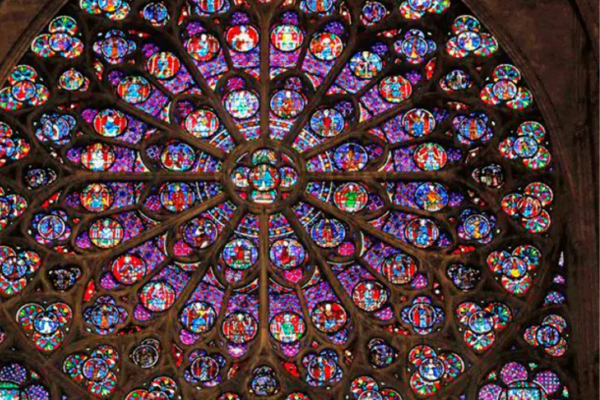Introduction
Stained glass art has captivated viewers for centuries with its intricate designs, vibrant colors, and timeless beauty. Originating in medieval Europe, this ancient art form has evolved into a versatile medium that continues to adorn churches, cathedrals, and secular buildings worldwide. From its historical significance to its modern-day applications, stained glass art remains a celebrated form of artistic expression. In this article, we delve into the rich history, techniques, and enduring allure of stained glass art.
A Glimpse into History
The origins of stained glass art can be traced back to the Middle Ages, where it flourished in the grand cathedrals of Europe. Initially used as a means to convey biblical narratives to illiterate congregations, stained glass windows became elaborate works of art, depicting scenes from religious texts with stunning detail and symbolism. Crafted by skilled artisans known as glaziers, these windows served as both functional and decorative elements, illuminating sacred spaces with radiant hues of light.
Techniques and Materials
Stained glass art is a meticulous and intricate craft that demands a blend of technical skill and artistic vision. The process begins with the creation of a design, a step where artisans unleash their creativity, drawing inspiration from a myriad of sources including nature’s intricate patterns, religious symbolism, or abstract concepts. These designs, often elaborate and rich in detail, serve as the blueprint for the final masterpiece.
Once the design is established, the painstaking task of translating it onto glass begins. This involves the careful selection and cutting of individual glass pieces to fit the intricate pattern. Artisans wield specialized tools such as glass cutters and grinders with precision, ensuring each piece seamlessly integrates into the overall composition.
However, it is in the application of color that stained glass truly comes to life. Artists employ a variety of techniques to imbue the glass with vibrant hues and subtle gradients. This is achieved through the use of pigments and metallic oxides, carefully applied onto the surface of the glass. Whether through brushing, spraying, or airbrushing, each stroke is deliberate, each color chosen with care to evoke the desired mood and atmosphere.
Following the application of color, the glass undergoes a transformative process in the kiln. Here, the painted glass pieces are fired at high temperatures, causing the pigments to fuse with the surface of the glass permanently. This firing process not only ensures the durability of the colors but also adds depth and complexity to the final piece.
The culmination of these techniques is a breathtaking display of color and light. When illuminated by natural sunlight or artificial lighting, stained glass windows and panels come alive, casting a mesmerizing array of hues and shadows into their surroundings. Each piece becomes a symphony of color, a testament to the skill and dedication of the artisans who brought it to life.
In essence, the techniques and materials involved in stained glass art represent a harmonious marriage of tradition and innovation. While rooted in ancient craftsmanship, contemporary artisans continue to push the boundaries of the medium, exploring new techniques and materials to create stunning works of art that captivate and inspire viewers around the world.
Enduring Appeal
Despite its ancient origins, stained glass art continues to captivate audiences around the world with its timeless beauty and versatility. While its traditional use in religious settings remains prevalent, stained glass has also found its way into contemporary architecture, interior design, and fine art. From residential homes to public spaces, stained glass installations add a touch of elegance and sophistication, infusing any environment with warmth and color.
Moreover, stained glass art serves as a testament to human creativity and craftsmanship, bridging the gap between past and present. Each piece tells a story, whether it be a religious allegory, a celebration of nature, or a reflection of cultural heritage. The interplay of light and color creates a mesmerizing effect that enchants viewers of all ages, inviting them to ponder the mysteries of the universe and the wonders of human ingenuity.
Conclusion
stained glass art stands as a testament to the enduring power of creativity and imagination. From its humble beginnings in medieval Europe to its contemporary applications in architecture and design, this ancient art form continues to inspire awe and admiration. Whether adorning the windows of a grand cathedral, enhancing the ambiance of a modern home, or serving as a focal point in public spaces, stained glass art delights the senses and uplifts the spirit. Its ability to transform light into a kaleidoscope of colors reminds us of the beauty that surrounds us in both the natural and the man-made world. As we marvel at the intricate designs and vibrant hues of stained glass art, we are reminded of the timeless allure of human ingenuity and the eternal quest for beauty and meaning in our lives.




